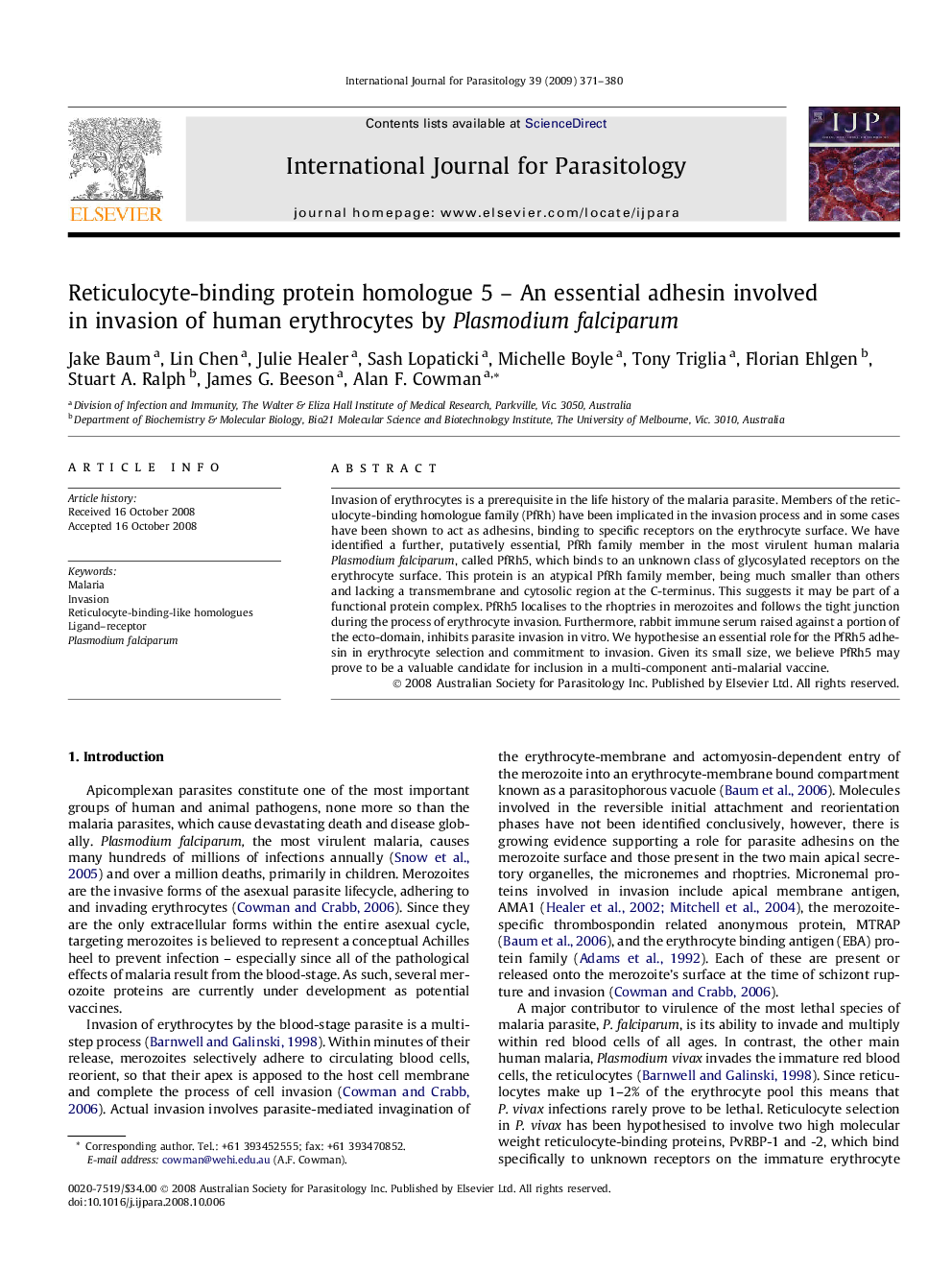| Article ID | Journal | Published Year | Pages | File Type |
|---|---|---|---|---|
| 2436634 | International Journal for Parasitology | 2009 | 10 Pages |
Invasion of erythrocytes is a prerequisite in the life history of the malaria parasite. Members of the reticulocyte-binding homologue family (PfRh) have been implicated in the invasion process and in some cases have been shown to act as adhesins, binding to specific receptors on the erythrocyte surface. We have identified a further, putatively essential, PfRh family member in the most virulent human malaria Plasmodium falciparum, called PfRh5, which binds to an unknown class of glycosylated receptors on the erythrocyte surface. This protein is an atypical PfRh family member, being much smaller than others and lacking a transmembrane and cytosolic region at the C-terminus. This suggests it may be part of a functional protein complex. PfRh5 localises to the rhoptries in merozoites and follows the tight junction during the process of erythrocyte invasion. Furthermore, rabbit immune serum raised against a portion of the ecto-domain, inhibits parasite invasion in vitro. We hypothesise an essential role for the PfRh5 adhesin in erythrocyte selection and commitment to invasion. Given its small size, we believe PfRh5 may prove to be a valuable candidate for inclusion in a multi-component anti-malarial vaccine.
